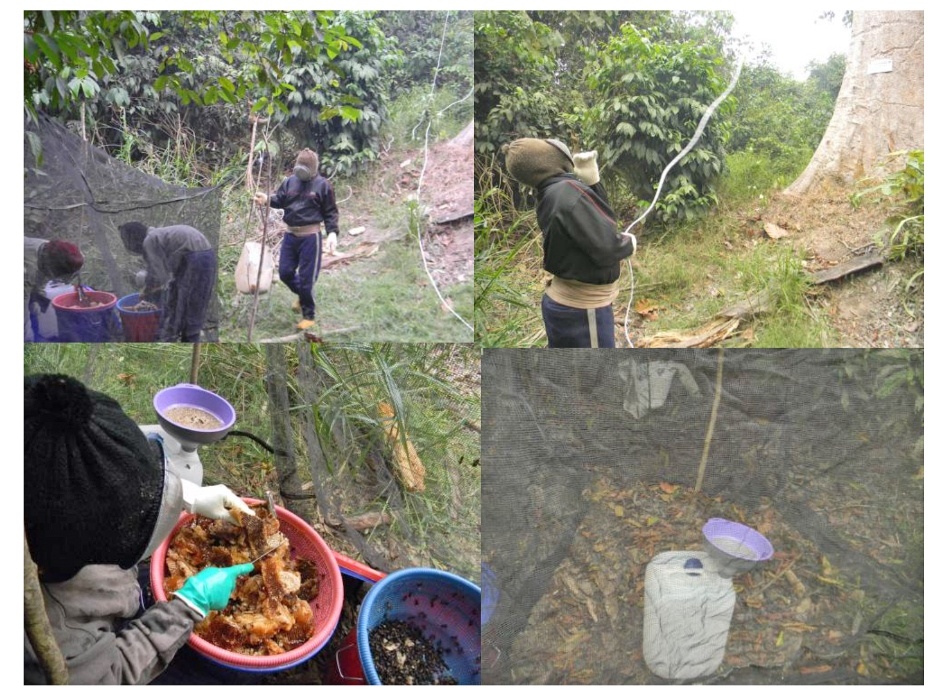Hutan Harapan is an ecosystem restoration area managed by PT Indonesia Ecosystem Restoration (REKI) in Jambi and South Sumatra Provinces. During the restoration activities in Hutan Harapan, there was no production or logging; the production of the forest is directed towards the utilization of non-timber forest products (HHBK) – which does not damage the ecosystem balance and is sustainable.
Forest honey, which is produced by forest bees (Apis dorsata) is one of the leading of non-timber forest products that have been developed in Hutan Harapan, obtained from the wild forest directly in the hordes or colonies of wild bees. The honey that came from the wild forest bee is natural, in the sense of being free from the influence of fertilizers, pesticides, and pollution.

On Monday 25 December 2017, Hutan Harapan in collaboration with the CAPPA NGO held a Hygiene and Sustainable Forest Honey Management Training for Indigenous Communities and Local Communities in Hutan Harapan. Sustainable management is a way to manage forest honey by prioritizing the protection of bees and their habitats as well as sustainable processing and packaging.
The training was conducted at the Hutan Harapan Base camp, Bungku Village, Bajubang District, Batanghari Regency. The honey management training instructor is Bahrizon, leader of the Sailan Honey Farmers Group, Kampar, Riau, who has experience in managing forest honey. He came with Samsi, who is a honey climbing expert.
According to Bahrizon, to ensure the sustainability of the lives of forest honey bees, the protection of sialang trees is needed. The quality of honey is very dependent on the food source or nectar plants that are around the sialang tree.

The harvesting process according to Bahrizon is done by only taking the head of a hive containing honey and leaving some for food sources of bee cubs in the hive. “Don’t harvest young nests. This is important for the preservation of honeycombs,” he said.
The post-harvest process must also be considered because this determines the quality of honey. The honey preparation and sieve are hygienic – clean and healthy. The sliced knife must be stainless. Harvesters must wear masks or protective clothing; when draining and processing must use headgear.
The filter is specially selected from nylon with several sizes. Harvesters use gloves and slice the honey with a stainless steel knife, then drain with a sieve. The rest of the beehive is put into a container to be processed into wax. After draining, jerry cans closed tightly.

Storage of honey is recommended to be far from oil, safe from the reach of children and spared from ants. Smoking in honey storage is prohibited. Storage is carried out well so as not to be contaminated or exposed to sunlight. Honey is closed tightly, may not be opened often.
“Standardization of bulk forest honey packaging in jerry cans should pay attention to the following: workers must use masks, gloves, and trousers. Honey is deposited in barrels made of stainless steel for 48 hours to reduce froth,” Bahrizon explained.
After that, honey is put into jerry cans that are cleaned with hot water and coated with plastic on the inside. Jerry cans that contain with honey must be wrapped in sacks, neatly sewn and labeled.

When packaging honey bottles, workers must also wear masks, gloves and laboratory clothing. From the storage, honey is measured and then put into a place to reduce water content. After that, put in a stainless steel barrel and re-precipitate for 48 hours. Meanwhile, bottles for packaging are prepared and cleaned. The bottle containing honey is given a seal and label and includes an expiration period. Finally, Honey is ready to be marketed.
Training is also carried out by demonstrating harvesting techniques for processing and packaging.
Writer: Ardi Wijaya
Editor: Joni Rizal








